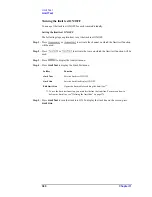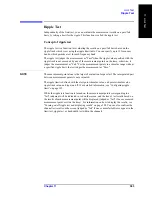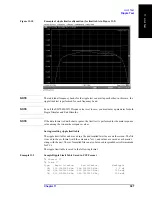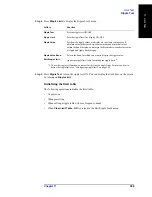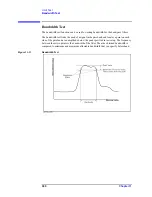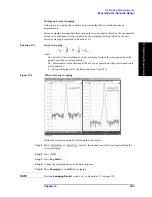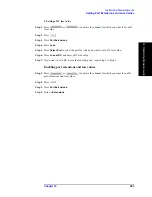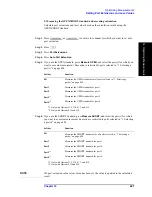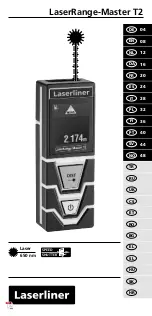
394
Chapter 12
Optimizing Measurements
Expanding the Dynamic Range
Expanding the Dynamic Range
The dynamic range is the finite difference between the maximum input power level and the
minimum measurement power level (noise floor) of the analyzer. In evaluating a
characteristic accompanied by a large change in the amplitude (the pass band and stop band
of a filter, for example), it is important to increase the dynamic range.
Lowering the receiver noise floor
Lowering the noise floor of the receiver enables you to expand the dynamic range. The
following methods can be used to lower the receiver noise floor.
•
“Narrowing the IF bandwidth” on page 394
•
“Turning on Sweep Averaging” on page 395
Narrowing the IF bandwidth
Narrowing the receiver IF bandwidth enables you to reduce the effect of random noise on
measurements. Narrowing the IF bandwidth to 1/10 the original bandwidth causes the
receiver noise floor to decrease by 10 dB.
Figure 12-1
Effects of narrowing the IF bandwidth
To specify the IF bandwidth, follow the steps described below.
Step 1.
Press
or
to select a channel on which to specify the IF
bandwidth.
Step 2.
Press
.
Step 3.
Press
IF Bandwidth
.
Step 4.
Change the IF bandwidth in the data entry area.
Summary of Contents for E5070B
Page 6: ......
Page 30: ...24 Contents ...
Page 34: ...28 Chapter1 Precautions Before contacting us ...
Page 286: ...280 Chapter6 Data Analysis Using the Equation Editor ...
Page 430: ...424 Chapter12 Optimizing Measurements Performing a Segment by Segment Sweep segment sweep ...
Page 538: ...532 Chapter15 Measurement Examples Executing Power Calibration ...
Page 634: ...628 AppendixB Troubleshooting Warning Message ...
Page 732: ...726 AppendixD Softkey Functions Trigger Menu ...
Page 740: ...734 AppendixE General Principles of Operation Data Processing ...
Page 760: ...754 AppendixF Replacing the 8753ES with the E5070B E5071B Comparing Functions ...

